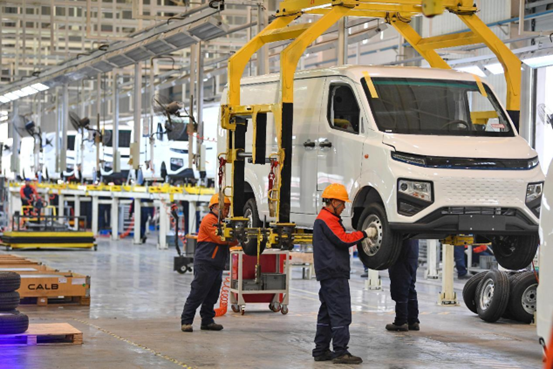By Han Xin, People's Daily
China's production and sales of new energy vehicles (NEVs) reached 7.06 million and 6.89 million units respectively in 2022, up 96.9 percent and 93.4 percent year-on-year, and NEV exports grew 120 percent from a year ago.
During the past decade, China has witnessed a rapid development of its NEV industry, ranking first in the world for eight consecutive years in terms of NEV sales. The country holds over 30,000 relevant patents, or 70 percent of the world's total. It is making constant progress in the development of NEV technology.
The Chinese NEV industry has grown big and strong in just a few years. This couldn't have been achieved without NEV engineers, a group that's gradually expanding.

NEV engineer Zheng Shuhao of a Chinese carmaker returned to work just after the Chinese New Year holiday. "We delivered 34 percent more NEVs last year than a year ago, and our sales will hit new highs after the mass production of two new models this year," Zheng told People's Daily.
Motor control unit, or MCU, is like the central nervous system of NEVs. Optimizing MCU's algorithm can make the motor run at lower cost and thus extend the range of the vehicles.
Zheng and his team has upgraded their MCU for over 100 times, extending the range of an NEV from 500 kilometers to 510 kilometers.
"Every effort contributes to the competitiveness of a product. Even a single kilometer of range extension is worth the effort," Zheng said.
Vehicles are turning not only electric but also connected. Over-the-air update of MCU makes electric vehicles more intelligent and functional.
Different from the cabin and in-vehicle infotainment systems that are appreciable, MCU software is like a "backstage hero" that, through deep learning, better connects drivers and passengers with the vehicle, Zheng explained.
Thanks to the increasingly robust development of MCUs, the ecology of NEVs is getting better and better.
"A new model we launched at the end of last year was equipped with a series of smart connection functions, as well as a second-generation MCU that we developed. This has not only further optimized the vehicle's energy consumption but also created a better experience for drivers and passengers," Zheng said.

Chinese NEVs are being exported at a faster pace. According to statistics, one in every 10 NEVs in Europe comes from China.
Zheng told People's Daily that his company has started presales of multiple new models in Germany and the Netherlands, built a 10,000-square-meter battery plant in Hungary, and installed 10 battery swapping stations in Europe.
Zheng attributed the big sales of Chinese NEVs in the overseas market to their competitiveness, though cheap and cheerful products are an advantage of "made in China."
He believes that only world-leading MCUs can help China gain an edge in global competition.
"We finally received international safety certification for our second-generation electric-drive platform after experiencing dozens of rounds of validation in the past two years," said Zheng, adding that the new products of the company will surely set new records in the overseas market.
The engineer is committed to his career in the NEV industry. "Developing NEVs is the only way for China to upgrade from a big vehicle-manufacturing country to a strong one. With strong supportive policies and a vigorous market, we are in the best era of NEV development. " Zheng noted.


